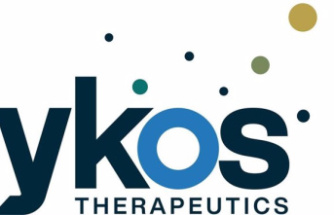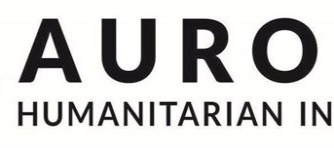(Information sent by the signatory company)
- Research study provides evidence that recombinant endolysin XZ.700* is a novel and promising non-antibiotic treatment strategy aimed at controlling Staphylococcus aureus (S. aureus) colonization of lesional skin in cutaneous T-cell lymphoma (CTCL)
Research shows that XZ.700* could block the tumor-promoting effects of S. aureus on malignant T cells, potentially slowing tumor progression
The findings strengthen the potential of Micreos' endolysin technology to address the unmet needs of patients in the treatment of CTCL in the wake of devastating antimicrobial resistance.
ZUG, Switzerland, March 8, 2023 /PRNewswire/ -- Micreos is pleased to share the positive results of a research study: Endolysin inhibits patient-derived Staphylococcus aureus skin colonization and malignant T-cell activation in the cutaneous T-cell lymphoma, published in the Journal of Infectious Disease, 2023 (https://doi.org/10.1016/j.jid.2023.01.03...). The study, led by Professor Niels Ødum, from the University of Copenhagen Research Center for Skin Immunology, was carried out to investigate the effect of endolysin (XZ.700*) on skin colonization, Chemokine expression, proliferation of pathogenic S. aureus, and possible tumor-blocking effects on malignant T cells.
Cutaneous T-cell lymphoma (CTCL) is a rare and debilitating form of skin cancer that affects the T cells that are part of the immune system. S. aureus and staphylococcal enterotoxins (SE) are suspected to stimulate disease activity and cancer progression in CTCL through direct stimulation of malignant T cells1-3. It has a profound impact on the quality of life of patients due to its chronic nature and the fact that a considerable proportion of patients have a poor or non-sustained response to current treatments4-5. CTCL is a rare disease with fewer than 200,000 patients in the United States, which means that the indication qualifies for an orphan drug designation6,7.
Niels Ødum, Professor at the University of Copenhagen Skin Immunology Research Center, who has been working with Micreos to validate the endolysin treatment approach in CTCL from a preclinical perspective, explained: "The results of this study are significant. , as they show that endolysin XZ .700* has the potential to improve patient outcomes by targeting bacteria that are associated with CTCL disease activity and progression Antibiotic treatment of S. aureus is discouraged due to the associated risk of antibiotic resistance induction.Therefore, there is an important medical need for new specific anti-staphylococcal alternatives such as XZ.700* that do not show signs of resistance induction.This study showed that endolysin XZ.700* profoundly inhibited skin colonization by S. aureus in both healthy skin and skin with lesioned CTCL. It is noteworthy that we saw that this endolysin killed S. aureus after S. aureus colonization was established, suggesting that XZ.700* has potential both in an acute treatment and as a prophylactic treatment."
XZ.700* has been developed by Micreos, a world-class endolysin platform company, as a topical treatment of inflammatory skin symptoms associated with CTCL and for reduction of disease activity in adult CTCL patients. Studies have shown that aggressive antibiotic treatment inhibits malignant T cell proliferation and disease activity1. However, antibiotics are not a viable option for chronic use due to the development of resistance and the impact on the skin microbiome8. Research and development has progressed rapidly and based on preclinical models, Micreos has moved the development program from XZ.700* to the next generation endolysin, namely MEndoC.
"Micreos is committed to achieving a 'medical paradigm shift' in the successful treatment of diseases associated with life-threatening and disabling bacterial pathogens, where antibiotics cannot be used or are ineffective. XZ.700* was the first of many innovative endolysins in our development pipeline," said Matt Regan, CEO of Micreos. "Professor Ødum's work has been incredibly important. Given the highly encouraging results, we are advancing our research and development program at CTCL with our 'next generation' endolysin MEndoC which has significantly higher levels of intrinsic activity. This is a extremely positive news as we move closer to our clinical trial program, we are working to make endolysin-based therapies a clinical reality by providing clinicians with the ability to specifically and selectively target harmful bacteria that play a important role in diseases such as CTCL, while preserving the rest of the microbiome. This may provide an important and potentially viable solution to the global AMR crisis."
About Micros
Micreos is a clinical-stage pharmaceutical biotech developing medicinal solutions to combat antimicrobial resistance and make a big difference for humanity. With its unique ability in modular engineering to optimize enzyme therapy, Micreos is pioneering the development of antimicrobials that selectively kill only harmful bacteria while preserving the rest of the health-enhancing microbiome.
Micreos focuses on the challenges facing modern medicine in the 21st century by selecting and designing biological alternatives to current antibiotics, which are increasingly unable to combat bacterial infections that play an important role in diseases. diseases, often beyond the primary infection. Current investigational treatments are being evaluated in three therapeutic areas that are caused or aggravated by pathogenic bacteria and where growing antibiotic resistance is leaving patients with increasingly limited options: cutaneous T-cell lymphoma (CTCL), dermatitis atopic disease (AD) and bacterial bloodstream infection (BBI).
www.micreos.com
About XZ.700
*About MEndoC
Based on preclinical models and increased intrinsic activity, Micreos has moved the development program at CTCL from XZ.700 to next-generation endolysin, primarily MEndoC.
Endolysins and Micreos technology
Endolysins are small organic structures originally used by viruses that kill bacteria, called bacteriophages. Endolysins work by attaching to the outside of the bacteria. Once attached, they break the bonds within the bacterial cell wall, causing the bacteria to explode and die. Both steps require structures that are unique to both the endolysin and the target bacteria, which means that endolysins only attack and kill one type of bacteria.
Micreos employs a unique science-driven approach to engineering endolysins and bacteriophages into targeted antibacterial treatments, harnessing the high potential of both technologies for its proprietary products. Its molecules selectively target harmful bacteria, including antibiotic-resistant strains, that cause and exacerbate acute and chronic disease. The natural bacteria of the microbiome, beneficial for our health, are not affected. Due to the unique mode of action of endolysins, the emergence of resistance is extremely unlikely.
forward-looking statements
This press release contains forward-looking statements within the meaning of the Private Securities Litigation Reform Act of 1995. All statements contained in this press release that do not relate to matters of historical fact should be considered forward-looking statements, including, among others, statements regarding expectations regarding the potential of our candidate products, including our lead candidate XZ.700 (MEndoC) and expectations regarding our portfolio, including trial design, initiation of preclinical studies, and progress of multiple preclinical development programs. These statements are not promises or guarantees, but rather involve known and unknown risks, uncertainties and other important factors that may cause our actual results, performance or achievements to be materially different from any future results. Any forward-looking statements represent management estimates as of the date of this news release. Although we may choose to update such forward-looking statements at some time in the future, we disclaim any obligation to do so, even if subsequent events cause us to change our views.
References
Available upon request
Logo - https://mma.prnewswire.com/media/2017889...
View original content: https://www.prnewswire.com/news-releases/la-endolisina-xz700-controla-la-colonizacion-por-s-aureus-de-la-piel-en-el-linfoma-cutaneo-de-celulas-t-301765809.html













